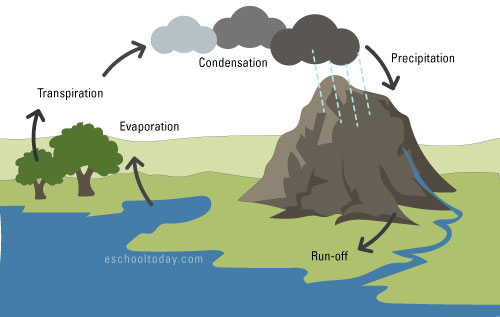- Earth System
The Hydrosphere
The hydrosphere includes all the water parts on the planet. It includes water on the surface, sub-surface, and water vapor in the atmosphere. The hydrosphere and the atmosphere are known as the fluid spheres. These spheres are the liquid and gas components of the earth.
QUESTION:
Water vapor from the oceans is gas but also water. Which sphere does water vapor belong to? Atmosphere or Hydrosphere? Discuss this with your class.
Think of all the water in the oceans and seas, including all the frozen water and ice (cryosphere). Also think of all the lakes, lagoons, rivers, and ponds, as well as water in the water table beneath the surface of the earth. They are all part of the hydrosphere and together they cover more than 70% of the surface of the earth.
The hydrosphere is also in infinite processes every day. The water cycle is one way to understand how the hydrosphere functions and supports other spheres.
Consider the illustration below:

The oceans and water bodies absorb the sun’s energy and warm up. Transpiration by trees and Evaporation of surface water occurs. The water vapor in the atmosphere condenses (condensation) to form rain clouds and comes down as rain (precipitation). The rains fall back on land and into water bodies (run-off) again and they all run back into the ocean for the cycle to continue.
A complete water cycle takes time. Other spheres are impacted in many ways during the water cycle.
